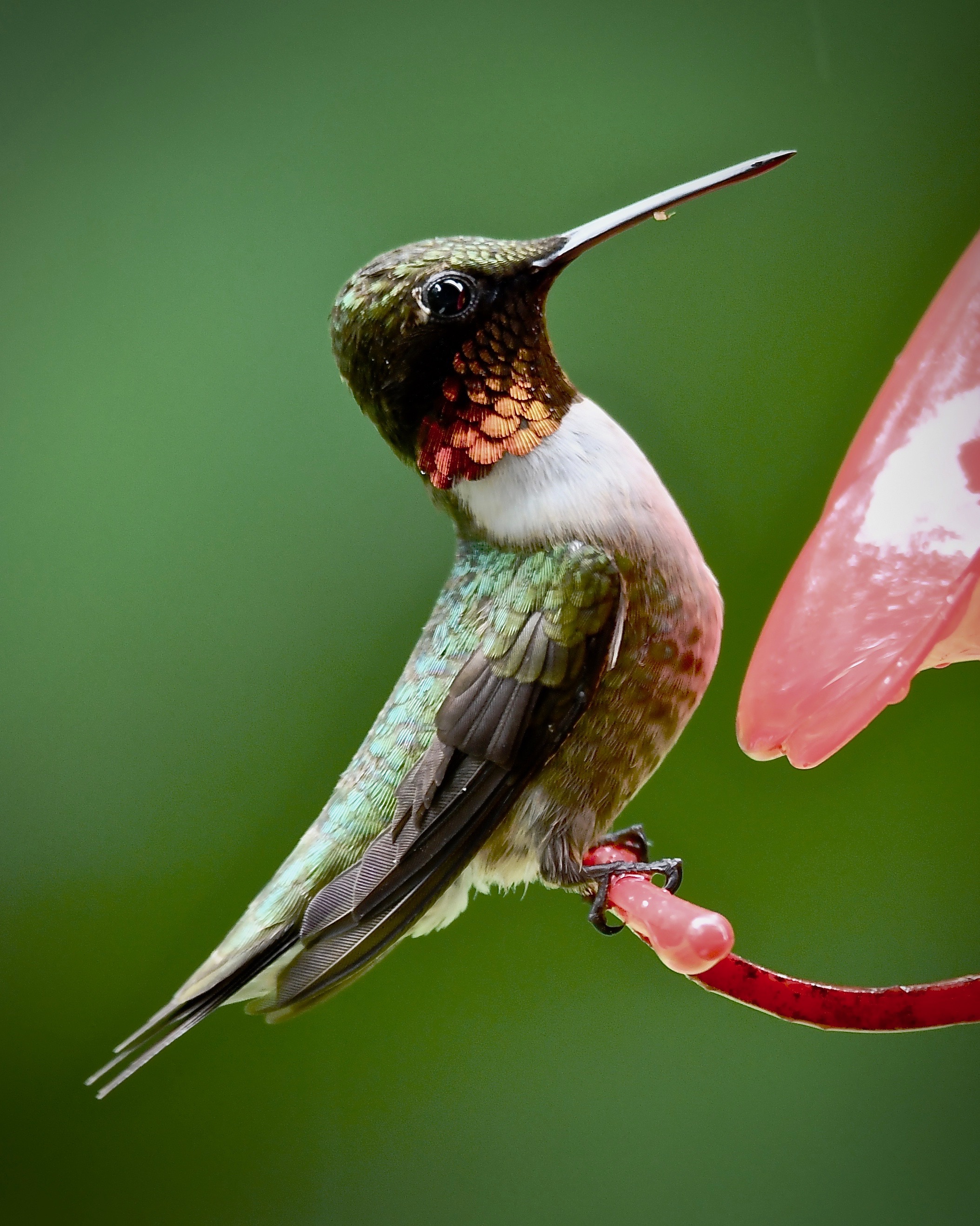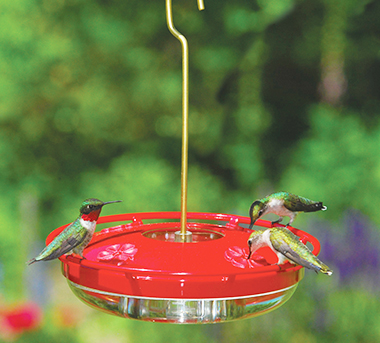Here we are at the beginning of August and the time has come for Ruby-throated hummingbirds to ramp up their interest in feeders and the action will be fast and furious now through the end of September until as late as mid-October. Hummingbird nesting is likely near conclusion. If you have been discouraged by the lack of hummingbird activity thus far this summer now is the time to make fresh nectar, clean up the feeder and try again.
For many of you the spring and early summer months produce little if any activity at your feeders. Why? Let’s not forget Ruby-throated hummingbirds DO NOT make the long journey here from Central and South America for the sugar water in feeders. They DO NOT NEED the feeders but will take full advantage of them when they are through nesting and fattening up for migration becomes their primary goal. Hummingbirds have been migrating here for thousands of years to breed and to take advantage of the abundance of insects, which is their primary food source. They would be here even if hummingbird feeders did not exist.
It is thought by many the reason for this sudden surge is they have just "come back" from where they've been. Actually, it is because summer resident hummingbirds have concluded raising one, two, or even three broods of offspring and are ready to begin taking advantage of nectar in feeders.
Ruby-throated hummers usually raise two chicks at a time so when the nesting phase concludes you may be seeing at least 6 young hummers coming to feeders. The youngsters, male and female, look very much like adult females. Then as hummingbirds from more northern locations begin funneling through TN in late August and into September the fun really begins. Wave after wave of hummingbirds begin passing through TN on their way to the Gulf of Mexico where they will eventually find their path across. Hummingbird migration is triggered by the days now getting shorter, not necessarily temperature or weather.
The best nectar you can offer hummingbirds is a simple 1 part sugar to 4 parts water solution. It is not necessary for the water to be brought to a boil before adding sugar. The nectar is ready after the sugar has been stirred in and fully dissolved. Do not add color. Color is absolutely unnecessary and potentially harmful. Also it is bad to use natural raw sugar, the kind that is slightly brown in color. Regular white table sugar is best. When making larger batches for refrigeration boiling the water is recommended.
As October approaches and numbers of hummingbirds have decreased significantly it is good to keep at least one feeder out to provide late migraters a “fueling” station. It is not true that leaving a feeder out will cause hummingbirds to stay and ultimately not migrate.






